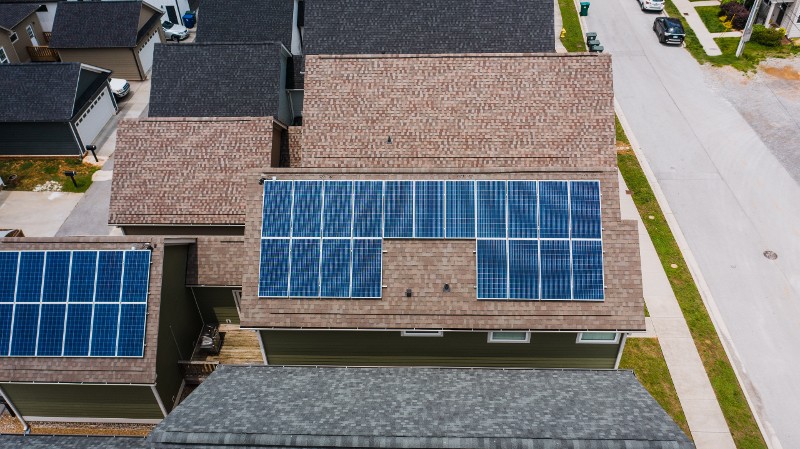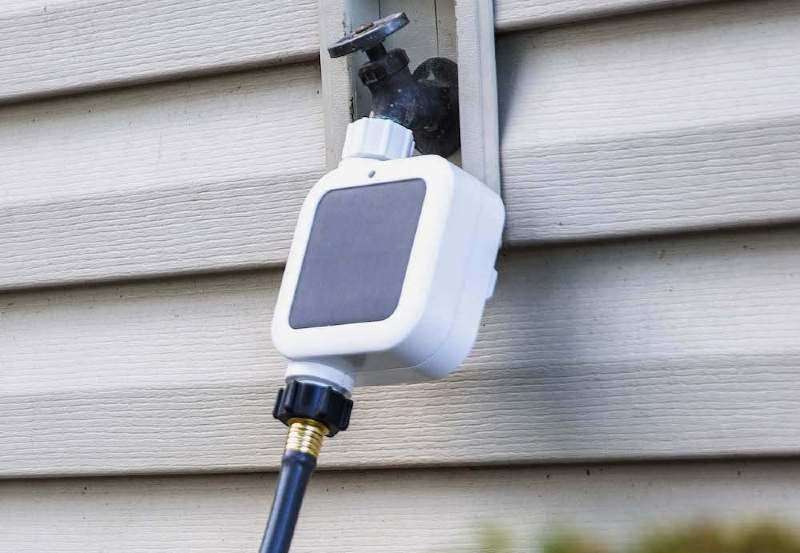Does installing solar panels really boost your home’s value in 2025?
It’s a question that homeowners, real estate agents, and investors are asking more than ever—especially as energy costs rise and buyer priorities shift.
This guide brings together the latest research, market insights, and real-world examples to deliver a definitive, evidence-driven answer.
You’ll discover how solar affects resale price, appraisal outcomes, and time-on-market for different types of homes across the U.S.
We’ll break down the financial benefits, explore regional trends, and highlight what today’s buyers actually want from a solar-equipped property.
Most importantly, you’ll get practical guidance on maximizing your solar investment—whether you’re staying put or prepping to sell.
If you want to go beyond recycled advice and make an informed decision about solar’s impact on home value, you’re in the right place.
How Solar Panels Add Value to Your Home
Solar panels can meaningfully boost your home’s value—often more than traditional upgrades like a new bathroom or kitchen refresh.
The main reason is simple: solar panels drive down monthly energy bills, which appeals directly to cost-conscious buyers.
Lower utility expenses mean a reduced cost of homeownership year after year.
Homes with solar are also seen as modern, sustainable, and future-ready. That makes your listing stand out in a crowded market, especially among younger and eco-minded buyers.
Recent studies back up these trends. Zillow’s nationwide analysis found homes with solar panels sold for about 4.1% more—translating to an extra $9,000 for a $220,000 property.
The Lawrence Berkeley National Laboratory put the median premium even higher: $15,000 for an average solar-equipped home, or about $4 per installed watt.
Compared to other remodels, solar often has a better dollar-for-dollar return, with ongoing savings that kitchen tiles simply can’t match.
Key Takeaway: Solar panels increase home value by delivering real savings and appealing to today’s most motivated buyers—while outperforming many traditional renovations on ROI.
Research Findings on Solar Value Premiums
The Lawrence Berkeley National Laboratory (LBNL) conducted one of the largest studies on solar premiums, analyzing over 20,000 property sales in eight states.
Results showed that, across the U.S., buyers paid an average premium of about $15,000 for an owned 3.6 kW solar system—or roughly $4 per watt.
State-by-state, premiums range from $3 to $5 per watt, with higher returns in California, New Jersey, and parts of the Northeast.
Zillow’s 2023 data found a 4.1% price boost for solar homes versus nearby non-solar houses.
Methodologies vary: some studies rely on listing descriptions, others on verified appraisals, so reported value bumps can differ by 1-2% depending on regional demand, system age, and solar ownership structure.
Bottom line: well-installed solar consistently delivers an extra $10,000–$20,000 in most active U.S. markets.
Pro Tip: To maximize value, ensure documentation of your system’s permits, warranty, and production history are easily accessible at resale.
Key Factors Influencing Solar’s Home Value Impact
How much solar panels actually boost your home’s value depends on more than simply having them installed.
Location is a major driver—homes in sunbelt states or regions with high electricity costs generally see bigger gains from solar.
Local incentive programs and rebates can sweeten the financial upside and make solar a headline feature in your real estate listing.
Ownership structure is critical: owned systems translate to much clearer value for buyers than leased ones.
Panel age and condition matter, too. Newer, well-maintained systems with up-to-date warranties are far more attractive than worn-out or obsolete installations.
Buyers increasingly favor homes with integrated battery storage, as it offers backup power and savings beyond standard solar panels alone.
Lastly, shifting real estate trends can suddenly boost—or soften—local demand for solar-equipped properties.
For example, California homes with newer, owned solar arrays and battery backup typically fetch a premium in fast-selling markets, while the same setup may deliver less value in states with low energy costs or limited solar incentives.
Key Takeaway: The value impact of solar is highly local and depends on a cocktail of market conditions, ownership details, and the age and sophistication of your system.
Owned vs. Leased Solar Panels
Owned solar panels almost always add more value to a home compared to leased systems.
That’s because buyers prefer systems with no ongoing payments or transfer headaches—and lenders can more easily factor panel ownership into appraisals.
Leased solar can scare off some buyers due to complicated transfer requirements or added monthly costs, potentially reducing the property’s pool of eligible buyers.
Studies consistently show that homes with owned solar command higher sale prices and sell more smoothly than those with leased equipment.
If you’re considering solar and want maximum long-term value, ownership almost always wins.
Pro Tip: Keep thorough, easily accessible records of your solar system purchase and ownership to streamline the resale process.
Local Electricity Rates and Net Metering
In regions where electricity rates are high, solar panels can translate to substantial energy cost savings—making them especially attractive to buyers.
Net metering policies—which let homeowners get credit for excess solar power sent to the grid—can significantly boost a system’s financial payoff.
For example, homes in states like New Jersey, Massachusetts, and California typically see higher solar premium values because generous net metering boosts total ROI.
On the flip side, areas with low energy prices or less favorable utility policies see smaller value bumps from solar—even if the climate is sunny.
Key Takeaway: Buyers pay more for solar-equipped homes when local utility rates are high and net metering is robust, so your zip code has real leverage over solar’s market impact.
Condition and Age of Your Solar System
Well-maintained, newer solar installations stand out in the real estate market and often command higher appraised values.
Panels typically degrade around 0.5% to 1% per year, which means a decade-old system is less efficient and desirable than a newer installation under warranty.
Recent upgrades—like adding a battery storage unit or EV charger—can further raise your property’s appeal, signaling state-of-the-art energy infrastructure.
Buyers and appraisers alike will scrutinize system documentation, warranty status, and any available maintenance records, so keep those organized and ready.
Pro Tip: Invest in periodic system checkups and keep warranties current to ensure maximum value at resale.
Solar Battery Integration
The addition of home battery storage is turning into a top differentiator for solar-savvy buyers.
Batteries provide backup power during grid outages, potential savings on time-of-use electricity rates, and make your home’s energy profile far more resilient.
In markets where wildfire risks or power disruptions are rising, battery backup can tilt appraisal and buyer interest even further in your favor.
The ability to store solar power for evenings or storms is a major selling point—and often factors into a home’s “green” or smart-home premium.
Key Takeaway: Battery integration transforms basic solar into a powerhouse home upgrade, providing real resilience and a new layer of value for buyers.
Top States and Markets Where Solar Adds the Most Value
Where you live dramatically affects how much value solar panels add to your home.
In 2025, California continues to lead the pack, with multiple studies showing that homes with solar sell for a median premium of $15,000–$25,000 above similar non-solar homes.
Beyond California, states like New Jersey, Massachusetts, New York, and Hawaii consistently report some of the nation’s highest value gains.
High electricity rates, generous state incentives, and strong demand from eco-conscious buyers power these premiums.
Zillow analysis found that, nationally, homes with solar could sell for roughly 4.1% more than comparable non-solar homes—but in the Northeast and Southwest, that bump often climbs higher.
Emerging hotspots now include Nevada, Arizona, and Colorado, where growing adoption and policy support are heating up the market.
Incentive stability, net metering laws, and local grid reliability all play roles in these regional differences.
Key Takeaway: If you’re in a state with high power costs or robust solar policies, adding panels is more likely to boost your property’s sale price—and shrink time on market.
Comparing Solar to Other Home Renovations
Solar panels stand out not just for sustainability, but for the direct impact on home value compared to traditional upgrades.
Let’s look at the numbers: According to the National Association of Realtors, a kitchen remodel typically recoups about 50-60% of its cost at resale. Bathroom renovations and HVAC replacements often deliver a similar ROI—rarely exceeding 70%.
| Upgrade | Avg. ROI (%) | Ongoing Savings |
|---|---|---|
| Solar Panels | 70–100% | ✔ (Lower utility bills) |
| Kitchen Remodel | 50–60% | — |
| Bathroom Remodel | 55–65% | — |
| HVAC Replacement | 60–70% | Possible |
Solar also aligns with a growing segment of buyers who prioritize efficiency and sustainability—traits increasingly reflected in real estate trends from 2023 onward.
In contrast to other renovations, solar begins saving homeowners money from day one with lower utility bills, often adding thousands in cumulative lifetime savings.
Key Takeaway: Solar delivers strong resale ROI and immediate savings, outpacing many popular renovations in both value and buyer appeal.
Beyond Value: Additional Benefits of Installing Solar
Solar panels increase a home’s value— they deliver a tangible upgrade to your quality of life and cost profile.
Homeowners enjoy dramatically lower monthly energy bills from day one. Many also qualify for federal solar tax credits, state rebates, or net metering programs that put dollars back in your pocket every year.
With a solar system, your home becomes less vulnerable to rising utility rates. For tech-forward owners, solar integrates seamlessly with electric vehicle charging and smart home upgrades, supporting sustainable living and energy independence in one package.
Buyers increasingly view solar as an essential, not just a bonus— especially when combined with battery storage for blackout resilience.
Pro Tip: Maximize incentives and cost savings by installing solar before the federal Investment Tax Credit phases down.
Environmental and Lifestyle Benefits
Each solar installation cuts a home’s carbon footprint by thousands of pounds annually. In effect, a typical 6-kilowatt rooftop system offsets roughly 7-10 tons of CO2 every year.
Eco-conscious buyers often place a premium on homes with visible sustainability features. Solar signals a commitment to lower-impact living, which can boost curb appeal and open doors to new buyer segments.
Strong social perception of environmental stewardship even creates neighborhood-level ripple effects, sparking more solar adoption and elevating perceived property values over time.
Common Challenges and Caveats When Adding Solar
Not every solar installation automatically boosts your home’s value. In some cases, key challenges can shrink or even negate the expected premium.
Leased systems often complicate resale. Buyers may hesitate to take over long-term lease obligations, leading to drawn-out negotiations or price reductions.
Aged or outdated solar panels can turn off buyers. As technology advances, old panels may feel more like a liability than an asset—especially if warranties are expiring or replacement parts are rare.
Incomplete or missing documentation is a frequent pitfall. An appraiser or buyer needs to see proof of installation, ownership, permits, and utility interconnection agreements.
Changing state or local policy can also complicate things. A home relying on net metering or a generous incentive today may lose that advantage if rules shift before sale.
Pro Tip: Keep all paperwork organized and up to date, and consider professional maintenance before listing to maximize appraised value and minimize hassles.
Do Solar Homes Sell Faster?
Recent studies suggest homes with solar panels often sell quicker than comparable properties without them.
A 2023 Zillow analysis found that solar-equipped homes sold up to 20% faster in hot real estate markets like California, Arizona, and Colorado.
Buyers are drawn to the promise of lower utility bills and an eco-friendly lifestyle, especially as electricity rates climb nationwide.
For some, solar panels signal a “move-in ready” modern upgrade—no waiting for installation or incentives to lock in.
Backup power from solar-plus-battery systems is another major driver, boosting appeal in regions prone to outages.
However, the time-on-market advantage is most pronounced in areas with strong buyer awareness and high local energy costs.
Key Takeaway: In the right markets, solar panels can reduce listing-to-sale timelines by weeks—making a property stand out to both value- and sustainability-minded buyers.
Frequently Asked Questions About Solar Panels and Home Value
How much value do solar panels add to a home?
Recent studies show solar panels can add 3% to 5% to a home’s resale price—about $9,000 to $15,000 increase on a $300,000 property. Value gains vary by system size, region, and buyer demand.
Are solar panels worth it for resale?
Yes, in many markets. Homes with solar tend to sell for more and sometimes faster. Buyers often view long-term energy savings and reduced monthly bills as key selling points, especially where electricity rates are high.
Will solar panels affect my appraisal or mortgage?
Owned solar systems are typically included in appraisals, often raising property value. However, leased systems may be excluded or require additional paperwork, which can complicate mortgage approval or refinancing.
How do buyers perceive leased versus owned solar systems?
Owned systems are viewed most positively, since benefits transfer seamlessly. Leased panels can sometimes deter buyers, due to transfer requirements, ongoing fees, or uncertainty about contract terms.
Join our solar microdosing newsletter and get bite-sized, easy-to-understand insights into the world of solar energy.
From how solar panels work to building your own DIY solar system, we’ve got you covered.








